Visit to Scotland
September 3, 1967
There was a bit of sunshine in the morning when we set out, in contrast to the hard rain and high winds of yesterday afternoon. We drove through the outskirts of Glasgow and north to to Stirling and then Callander.
Westward from Callander we entered the famous area known as the Trossachs. Besides the Lochs there was nice forestland and colorful areas where green conifers and purple heather intermingled. In the forested parts it is very much like North Wales. We went to Loch Katrine, which has a small steamer named the Sir Walter Scott. Scott did much to popularize the Trossachs in his poem "The Lady of the Lake". Driving south toward Aberfoyle was the nicest part of the Trossachs to me with its intermingling of heather and small green conifers. At the viewpoint overlooking Loch Drunkie was a Scot in full highland dress (Stuart Tartan) playing the bagpipes and posing for the tourists. We understand that in the peak season there are many such on this stretch of road.
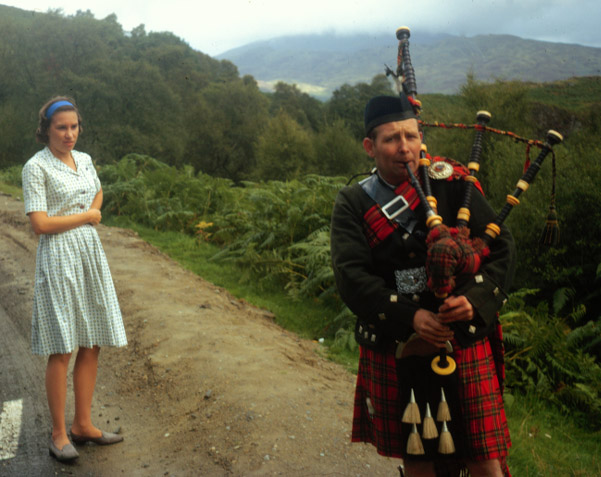
We drove on around to the bottom of Loch Lomond and started up the west side. We stopped on the bonny, bonny banks of Loch Lomond to eat lunch - only the banks would have been bonnier if the sky had been sunnier - it was pouring rain.
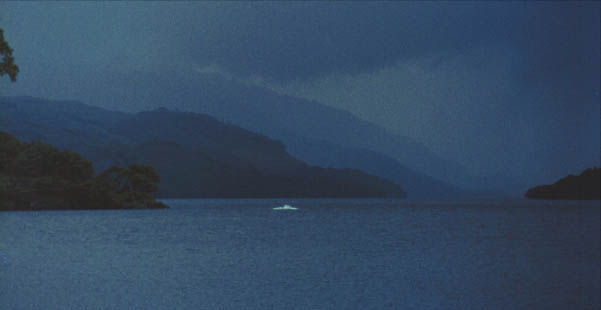
This was one of our first views of Loch Lomond in a downpour. It was nevertheless beautiful, with tiers of blue hills beyond it. Loch Lomond is the largest fresh-water loch in Scotland and has a large number of small forested islands. We got enough breaks in the rain to see that it must be a very beautiful place in good weather and is probably more deserving of its fame than are the Trossachs.
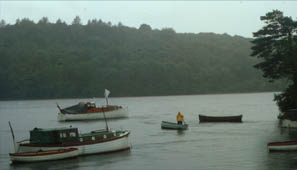 | There were hundreds of small boats and we even saw some people water skiing on this cold wet day. Loch Lomond is a major recreation area for the residents of Glasgow in addition to its role as a world-famed trap for foreign tourists. |
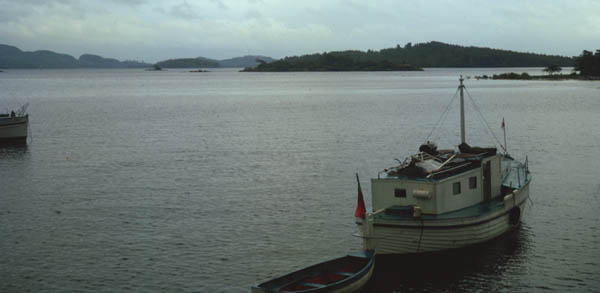
We drove up Loch Lomond to Tarbet and then turned off for the drive to Inverary. All the way to Loch Fyne we drove in a terrific downpour of rain. As we drove around the end of the loch the rain stopped and we got a good view of the Inverary Castle. Inverary was nice and neat but not very interesting to me.
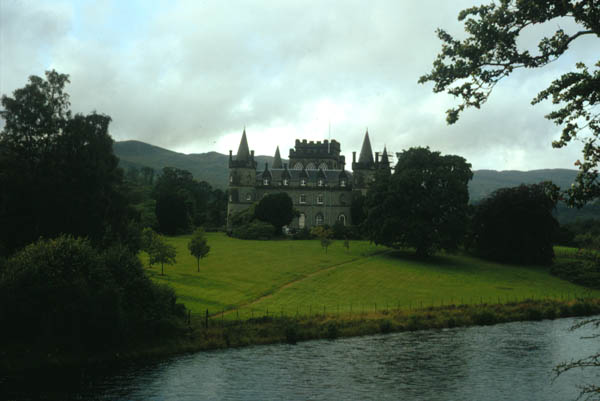
Turning northward we drove up toward Loch Awe. As we drove over a hill on the A819 we got a terrific view of the blue loch lying below us with an attractive pattern of green islands.
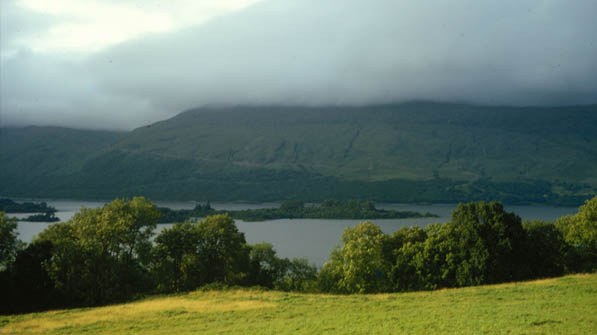
We found a bed and breakfast on the hill overlooking the loch. Wen we climbed the hill behind the house we got an unobstructed view of the top end of Loch Awe. This was the most beautiful sight we've seen to date on this trip. The clouds overhung the mountains across the loch and the mountains in the distance assumed a subtle blue color - we had read something about the blue-tinted mountains of Scotland.
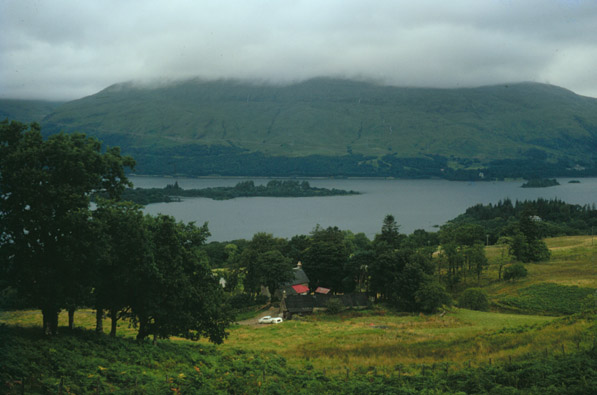
This is the view we got from the hill behind our Bed n' Breakfast. Our white car is visible by the house.
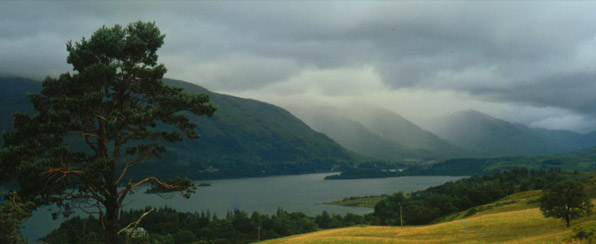
This view just to the right of the one above included this fine scots pine and a view of the distant tiered mountains.
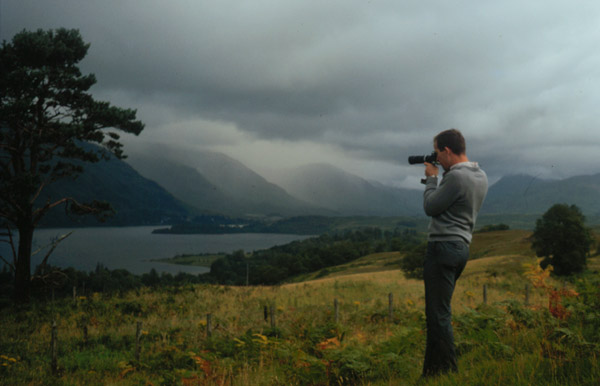
Rod in his most typical pose above Loch Awe.
 |
After taking our things in at the bed and breakfast we drove down to the village of Dalmally. We got other good views of the loch and saw the ruins of the Kilchurn Castle on an island (Kilchurn Island) in the loch. |
Upon returning to the house we saw a fawn in the pasture with the cow and calf. It turned out to be a pet of the family - a fairly young couple with two children. At milking time I went out to find both the calf and the fawn waiting at the barn door. The calf was fed in a bucket and the fawn on a bottle - both were waiting for their supper.
During the course of the day we had seen several men in kilts other than the tourist types. Evidently some of the old gentlemen use the kilt as their Sunday dress. We learned that many Scots are married in their kilts even now - they are considered formal dress.
| To September 4 |
1967